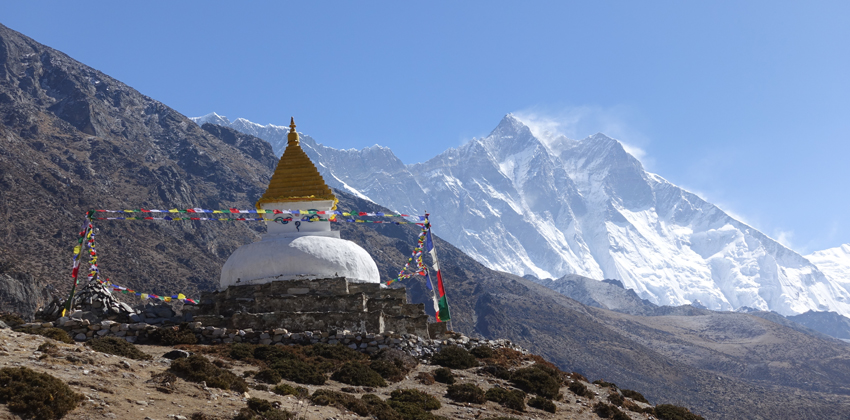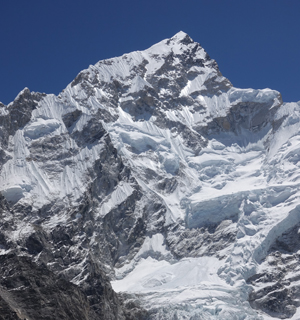
Expedition Peak Permit fees (from Nepalese side) and size of the expedition team members.
Rules effective from 1996 and as revised from Ministry of Tourism effective from Spring 2002
Classification of Peaks Permit fee (US$) including up to 7 members for each additional member up to 5
Mt. Everest 50,000 10,000
Mt. Everest (South-East Ridge) 70,000 10,000
Peaks of above 8000m 10,000 1,500
Peaks of above 7501-8000m 4,000 500
Peaks of above 7001-7500m 3,000 400
Peaks of above 6501-7000m 2,000 300
Peaks of above below 6501m 1,000 200
Some additional regulation
Special case for Everest normal south-east ridge but if there less than seven members, the royalty structure are as follows:
Team Permit Fee
1 members US$ 25000
2 members US$ 40000 (per person US$ 20000)
3 members US$ 48000 (per person US$ 16000)
4 members US$ 56000 (per person US$ 14000)
5 members US$ 60000 (per person US$ 12000)
6 members US$ 66000 (per person US$ 11000)
7 members US$ 70000 (per person US$ 10000)
More than one team may be permitted to climb Sagarmatha (Mt. Everest) by each separate route in one season.
A Permit fee of USD $50,000 has been fixed for Sagarmatha for a team consisting of 7 members. The team may include 5 more members provided if it pays USD $10,000 for each additional member. The permit fee includes trekking fee of the team members. The team members will be granted three months visas.
In all regions (Except south east ridge for Everest) including Khumbu, an expedition team can have up to 7 members for the minimum permit fee, and 5 more members for the additional permit fee.
The team already permitted to scale Sagarmatha will have to pay USD $10,000 if it intends to change the ascent route. It will have to pay additional USD $20,000 if it intends to change the ascent route to normal South East Ridge route.
For peaks other than Sagarmatha, the team will have to pay additional 25 % of the permit fee in US Dollars to change the ascent route.
Expedition team must complete all necessary administrative formalities and procedures in order to send back garbage of the expedition team to their countries, after the completion of the expedition. Ministry of Tourism and Civil Aviation will take necessary monetary deposit from them, which will be refunded after the dispatch of garbage from Nepal.
Each climbing team will be permitted with the written application form, indicating a partner trekking agency whom registered to the Government and accompanied by a sirdar/guide, who must be registered with Nepal Mounta
Garbage deposit for peaks in all region
Rules effective from 1992 and as revision in Spring 2002.
The ministry of tourism has fixed the price of the deposit for the management of garbage's by each mountaineering team.
Garbage deposit fee of Khumbu and Annapurna Regions' Mountains are as follows.
Name of the peaks Amount
Sagarmatha (Mt Everest) USD $4,000
Other peaks above 8000m USD $3,000
Peaks 7001 to 8000m and Amadablam USD $2,000
Peaks 6501 to 7000m USD $1,000
Peaks less than 6500m USD $500
Garbage deposit fees of other regions' mountains are as follows.
Name of the peaks Amount
Peaks Above 8000m USD $3,000
Peaks Below 8000m USD $3,000
Recycling materials should be brought to Kathmandu and handover to a prescribed agency for recycling and the re-exportable goods should be dispatched from Nepal to their respective countries and take back the deposited amount.
No Liaison officers for Expeditions under 6500m peaks.
Government has revised the existing mandatory system of deputing the Liaison Officer to every expedition team to the Himalayan peaks. As per the current provision peaks ranging below 6500 meters including the old and new do not require Liaison Officer anymore with effect from upcoming Spring season 2002 (March 1, 2002).
No recommendation letters.
Nepali peaks are now open for climbers throughout the year after the government scrapped the policy of granting permits in different seasons like spring, summer, autumn and winter. And the recommendation of national alpine clubs will not be required from now on to acquire climbing permits
